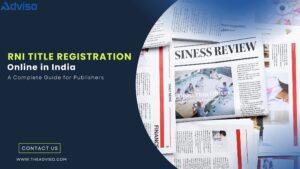CE Marking Certification
Every consumer product has a direct or indirect influence on our life and environment. While some products are meant to ease our lifestyle, some have drastic impacts, causing short and long-term damages. That‘s why products prone to cause damage (no matter the degree) must undergo specified quality and safety testing. This is where the concept of CE marking comes alive; it certifies certain categories of products after affirming they are safe to use and adhere to EU standards. CE marking is required for products meant to be sold in the European marketplace. Presently, nearly 30 categories of products fall under the CE marking. Let’s delve into the landscape of CE marking certification and its requirements.
An Interplay Between CE Marking and European Directives
CE marking signifies European standards for notified products, upholding their quality and reliability. It applies to products for which European directives (boasting technical specs and testing requirements) exist. The directives can be understood as a standard wherein testing requirements have been laid out by the technical committee in association with concerned stakeholders, including research institutions and government agencies.
Every notified product attracts a unique directive, typically entailing a long list of testing requirements. These requirements must be fulfilled to get CE marking certification. Adhering to these requirements signifies passing the mandatory tests for quality, safety, and reliability. It also requires drafting technical documentation wherein all the details of the product and its testing results are cited as required.
Understanding the significance of the notified body
Based on the product type, the manufacturer is required to perform a conformity assessment either by themselves or via a notified body.
Notified body is an indispensable part of the CE marking landscape. They facilitate expertise services to manufacturer seeking CE marking for their products. With their in-depth acumen about directives and products, they can expedite the legal formalities and get the CE marking certification seamlessly in one go. These bodies are independent and recognized by the EU legislation.
Every EU nation has a separate pool of notified bodies that can help addressing CE marking formalities. For example, Canada has a following list of notified bodies approved by the European legislation. Entities operating in Canada can contact them for services like conformity assessment and report preparation.
- LabTest Certification Inc. (NB 2815)
- NEMKO NORTH AMERICA INC. (NB 1622)
- CSA Group Testing Certification Inc. (NB 2899)
- INTERTEK TESTING SERVICES NA INC. (NB 2903)
- QPS EVALUATION SERVICES, INC (NB 2900)
- SGS NORTH AMERICA, INC. (NB 3015)
Note: NB refers to a body type/code (designed by the European legislation) that helps identify the notified body.
Although it is at the discretion of the manufacturer, contacting a notified body can help overcome testing complications and overwhelming legalities cited in the applicable legislation.
Check out our web stories: 7 Benefits of Opening A Business In Singapore
Which products fall under the CE marking certification?
Presently, CE marking applies to over 25 product categories. These include:
- Machinery
- Explosives for civil uses
- Safety of toys
- Non-automatic weighing instruments
- Ecodesign of energy-related products
- Cableway installations designed to carry persons
- Hot water boilers
- Personal protective equipment
- Measuring instruments
- Pressure equipment
- Active implantable medical devices
- Low voltage
- Appliances burning gaseous fuels
- Radio equipment
- Medical devices
- Noise emission in the environment
- Pyrotechnics
- Simple pressure vessels
- Electromagnetic compatibility
- Restriction of Hazardous Substances in Electrical and Electronic Equipment
- Lifts
- Equipment and protective systems serving potentially explosive atmospheres
- In vitro diagnostic medical devices
- Recreational craft
- EU fertilising products
How to get the CE marking for a notified product?
Securing the CE marking certification requires passing a specified procedure involving several steps as shown below:
Step 1: Identify the applicable directive(s) and harmonised standards:
First, you need to discover the directive (a standard set forth by the European Union) that applies to your product. The standard entails statutory details and testing requirements for the product. These standards serve as the basis for conformity assessment to be performed by either the manufacturer or the notified body.
Step 2: Verify product-specific requirements:
This step requires examining product functionalities, features, and attributes against directives identified in the preceding step. It is vital to ensure the product in question adheres to the underlying requirements. For instance, if you are selling calculators, you must affirm that it does not pose any health-related or environmental risk.
Step 3: Find out if there is a need for a Notified Body
After finding the relevant directive and examining requirements, it is time to figure out if you can perform a conformity assessment on your own or via a notified body. The decision to contact a notified body should be based on the product’s intricacy and testing requirements. For example, toys are easy to deal with than medical devices since the latter attracts a myriad of statutory requirements. In that case, contacting a notified body can be a wise decision.
Step 4: Perform conformity assessment
This step requires performing tests cited in the applicable directive to affirm the product’s quality, safety, and reliability.
Step 5: Draft a detailed technical documentation:
After completing the conformity assessment, the next step is to draft a detailed technical document for the product in question. This document must extensively cover the product’s details and its testing outcome for review. If you are assured of the product’s quality in the purview of the applicable directive, proceed to the next step.
Step 6: Affix the CE marking
The CE marking indicates that the product adheres to the EU standards and hence it is reliable and safe to use. Products that successfully pass the conformity assessment can bear the CE marking in a specified way, which is discussed in the next section.
Step 7: Prepare EU Declaration of Conformity:
This step requires drafting an EU Declaration of Conformity. This is essentially a declaration made by the manufacturer, assuring that the product in question is in compliant with EU standards and hence is fit to serve the European marketplace.
Rules regarding the use of CE marking
As per the European Commission and legislation, the CE marking needs to be in adherence to certain requirements as cited below:
- The manufacturer must consider the visibility, legibility, and indelibility of the CE mark before affixing it to the product.
- Unless specified otherwise, the mark must entail the initials CE, adhering to the same vertical dimension (which should not be less than 5 mm).
- You can elevate the size of the initial to some extent- but dimensions and visibility should not be compromised.
- There is no cap on the color of the marking. You can choose any color as long as the visibility and dimensions of the mark stay intact.
- If you have issues with affixing the mark on the product, use the packaging to display the mark. If your product attracts stringent EU directives/regulations, add supporting documents to the product to declare its conformity.
Conclusion
You need a tactical approach while striving to secure the CE marking certification for your product. Every consumer product has a distinctive conformity requirement since they attract different directives. So it is important to pay extra attention to detail before delving into the registration process. With that being said, you can also connect with the competent team of Adviso if meeting legalities is not your cup of tea and you wish to focus on things that matter.
Read Our Article: TEC Certificate In India: Scope, Types, Eligibility And Process




